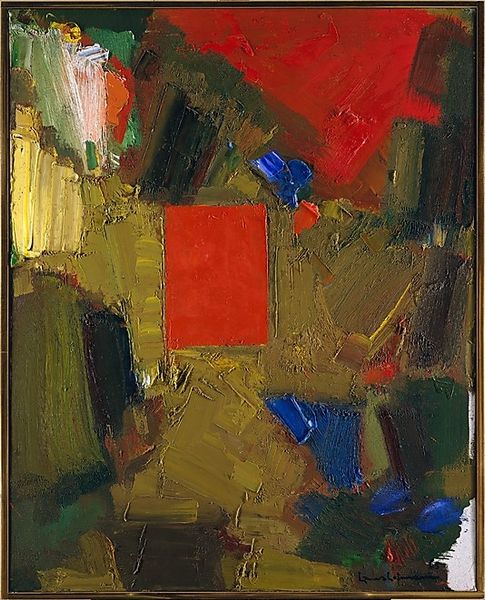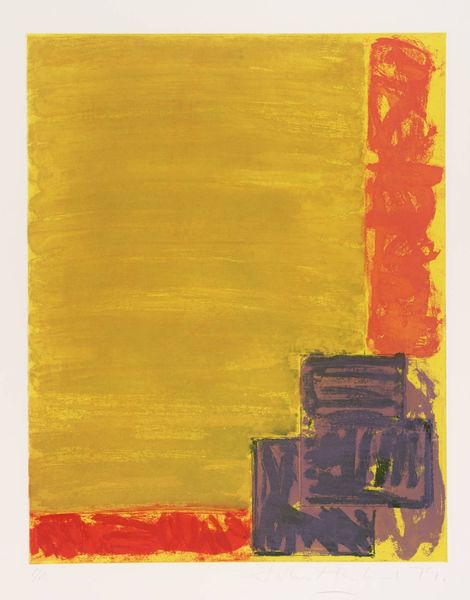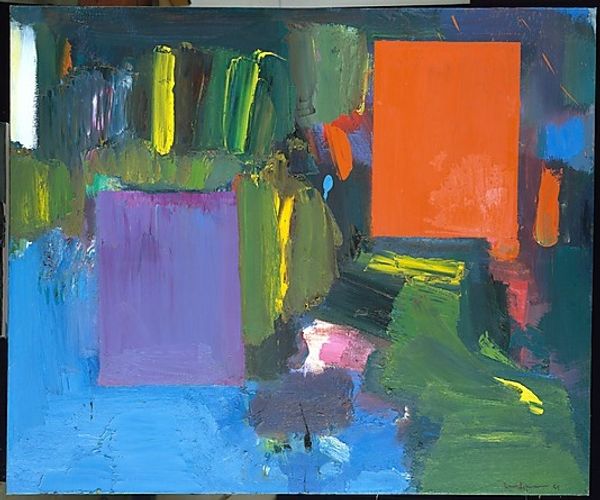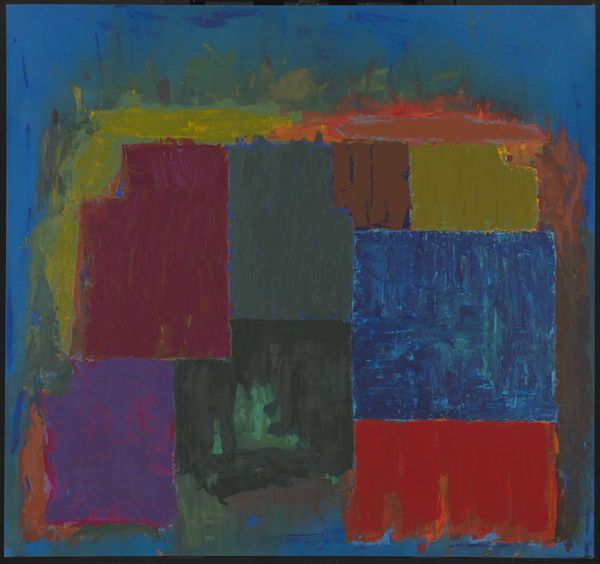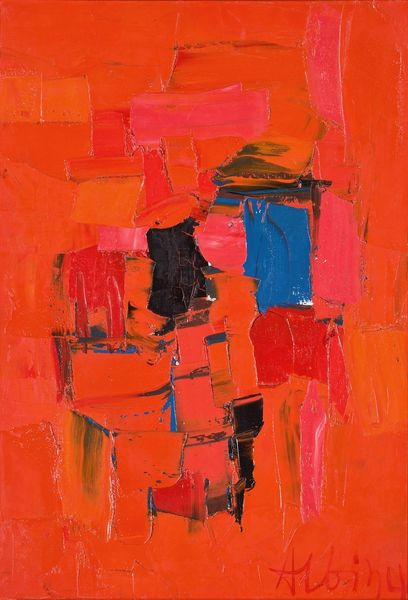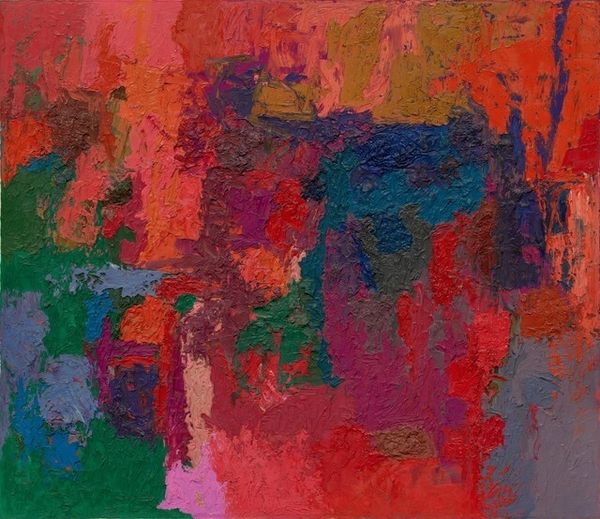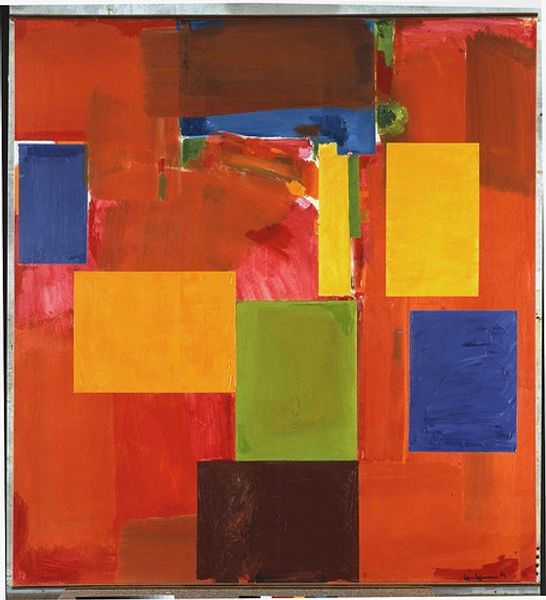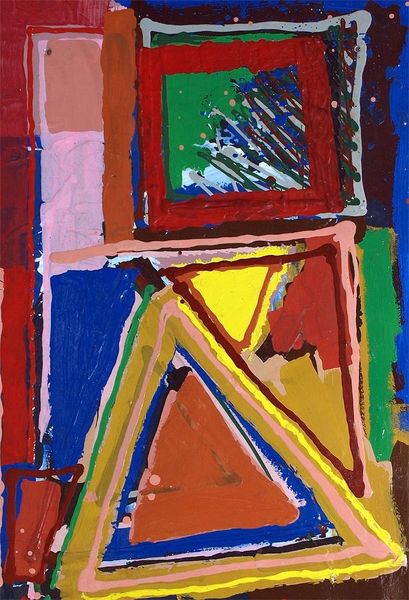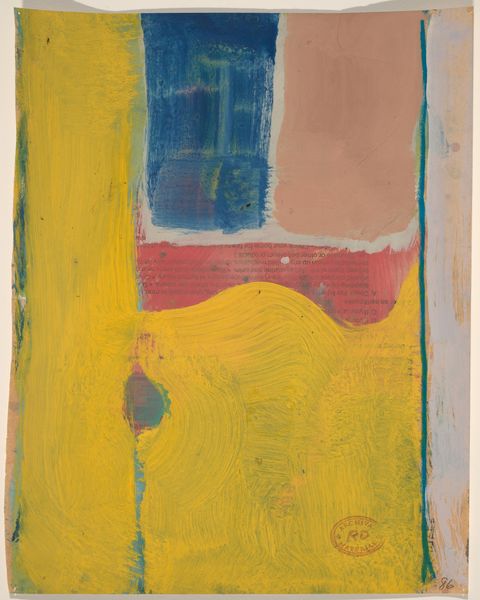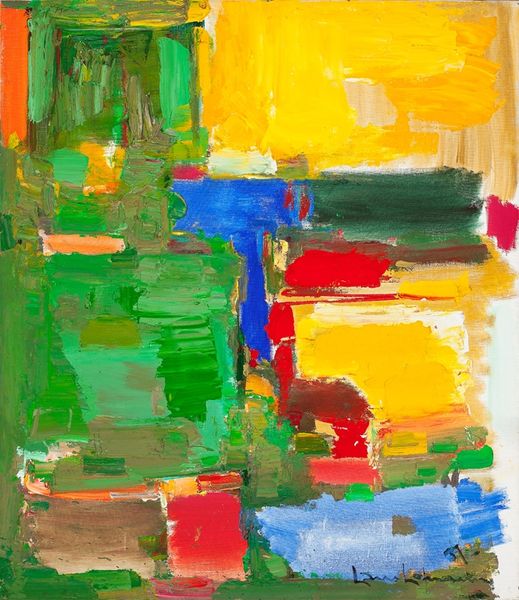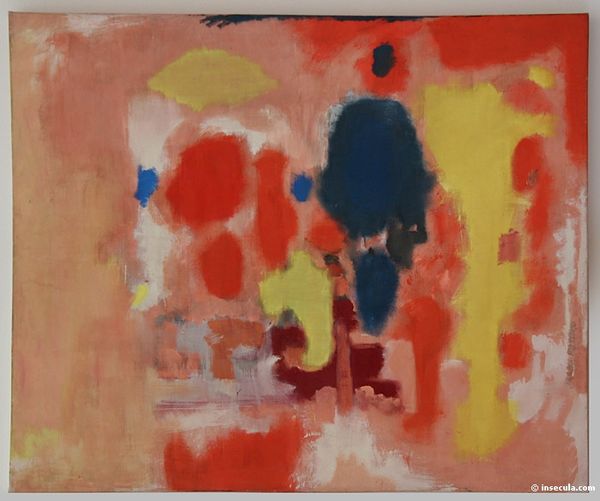
Copyright: John Hoyland,Fair Use
Curator: Oh, wow. John Hoyland's "Saracen" from 1977 really hits you, doesn't it? That overwhelming field of red—acrylic on canvas, I believe. What's your gut reaction? Editor: My gut? It feels oppressive, almost violent. That massive block of red dominates everything. There's something unsettling about it, though, also maybe something that reminds me of the feminist rage against an outdated establishment. Curator: Oppressive, that’s interesting. I see that red as… ecstatic, maybe? A release. Like a dam bursting and flooding everything with pure emotion. But, yes, there's that lower register, that fractured geometry and the palette shifts... Like he's grounding the passion. Are there echoes of Agnes Martin maybe? Editor: Possibly echoes, but unlike Martin, there's little room for subtlety here. It’s all blunt force. And look at that horizon line. The title, "Saracen," evokes such loaded histories too. Post-colonial readings jump to mind—a Western artist appropriating a term historically used to demonize the East. How can we not interpret this as a statement, or even a problem, when you see it now? Curator: I suppose it would be naive not to. Perhaps he’s taking ownership of those historical wounds and re-imagining the narrative through colour and form, allowing a cathartic act. What if the 'Saracen' refers not to a people, but the inner landscape we fight, within ourselves. Editor: It could be a metaphor. Yet even with Hoyland’s well-established work in pure abstraction, detaching from such heavy cultural implications feels... almost too easy. And for me, to interpret "Saracen" so abstractly ignores its violent roots. Curator: Art isn’t here to offer easy answers or comforts. To see something like “Saracen” and confront one’s biases is really valuable to the larger discussion. This is something to confront. And at its core it remains raw expression through an artistic vocabulary that manages to stand alone outside context and social histories. Editor: I concur, it leaves us plenty to contend with. Both visually and politically. Curator: Definitely a piece that stays with you. Provokes long after you walk away from it.
Comments
No comments
Be the first to comment and join the conversation on the ultimate creative platform.
